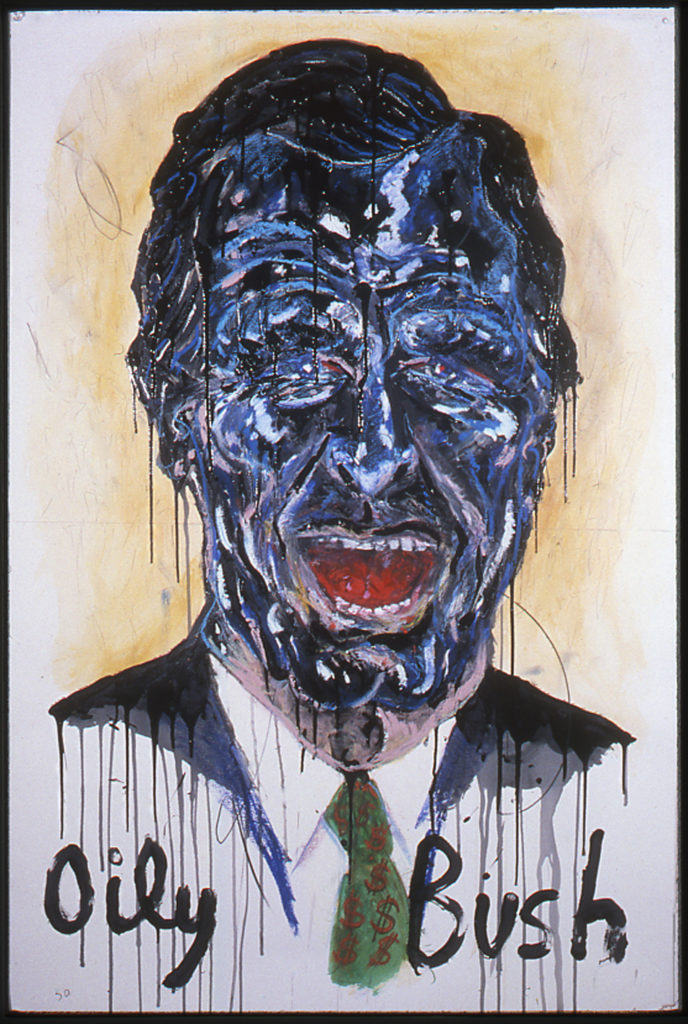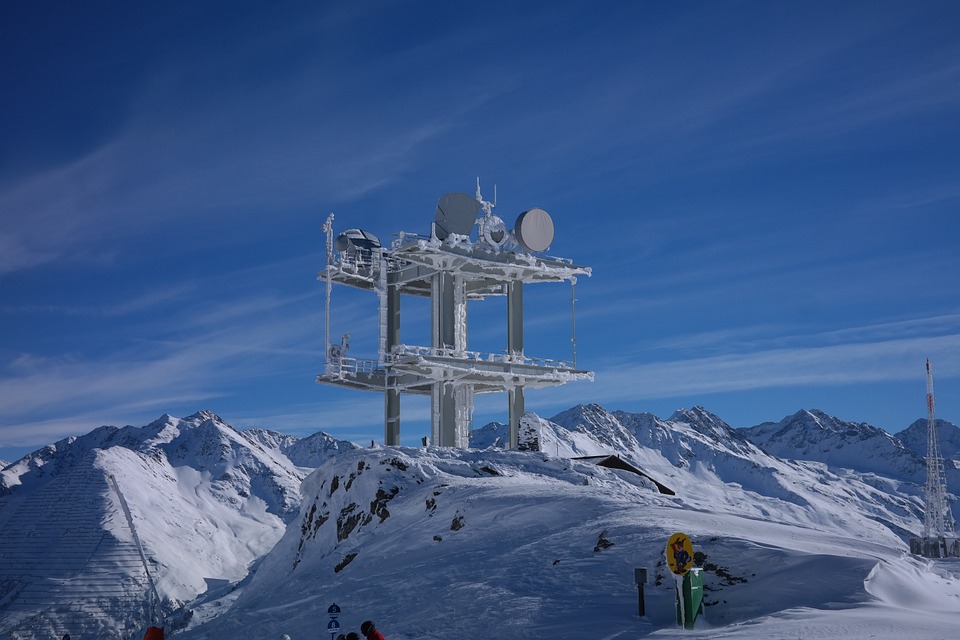Robert Arneson: Political Drawings
This exhibition review was originally published in the now defunct San Francisco Bay Guardian. It can be cited here as: Buckner, Clark. “Robert Arneson: Political Drawings,” www.clarkbuckner.com. Web. Day, Month, Year the post was accessed.

Robert Arneson Oily Bush, oil stick and plastic enamel on paper. 47.5 x 31.75 1991. Collection of the San Jose Museum of Art. Gift of the Lipman Family Foundation. Courtesy of Brian Gross Fine Art
In 1981, Robert Arneson was commissioned to sculpt a bust of recently assassinated Mayor George Moscone. The ceramic bust was radiant, honorific, and mounted on a pedestal covered with graffiti-like scrawl that recalled Moscone and episodes from his life, including images of bullet holes and other references to his assassination. When the work was unveiled at the inauguration of the Moscone Center, it sparked outrage and eventually was rejected by the Arts Commission. That experience taught Arneson the political potential of his work, and he subsequently produced a series of drawings addressing the nuclear arms race, Reagan’s cold war militarism, and the first Persian Gulf War.
Brian Gross has collected a set of these drawings for an exhibition that was remarkably timely despite the fact that Arneson died in 1992. One piece, The Hiroshima Bomb, presented Little Boy against a background of the city awash in fire and blood, and compared the force of all the bombs dropped during WWII with the nuclear arsenals of the U.S. and U.S.S.R. Another drawing, Gang of Four, caricatured Reagan’s cabinet with a jar of jellybeans on the desk in front of them, and an eagle behind them with a dildo-sized bomb in his talons. In another series of drawings, including Club Social and Special Forces, Arneson combined vigorous, colorful drawing with collage to create pictures of military leaders as sickly grotesques. And, in a series of three portraits never before seen in San Francisco, Arneson
presented the first President Bush as a depraved instrument of oil interests.
One strength of the show as a response to the crises of the day, both here and in the Middle East, lay in the historical framework it provided for them. While some people were explaining the “war on terror” in abstract, millennial terms concerning “clashes of civilizations,” the show at Brian Gross situated these crises concretely in relationship to the end of the Cold War. The fear of WMD’s can be traced to the threat of assured mutual destruction. The Bush / Wolfowitz doctrine of pre-emption was anticipated by the promise of a “new world order” with the U.S. as the sole remaining super-power. And the exploitation of terror in the name of a comical, militaristic sense of security can be seen as a long-standing feature of our political landscape.
